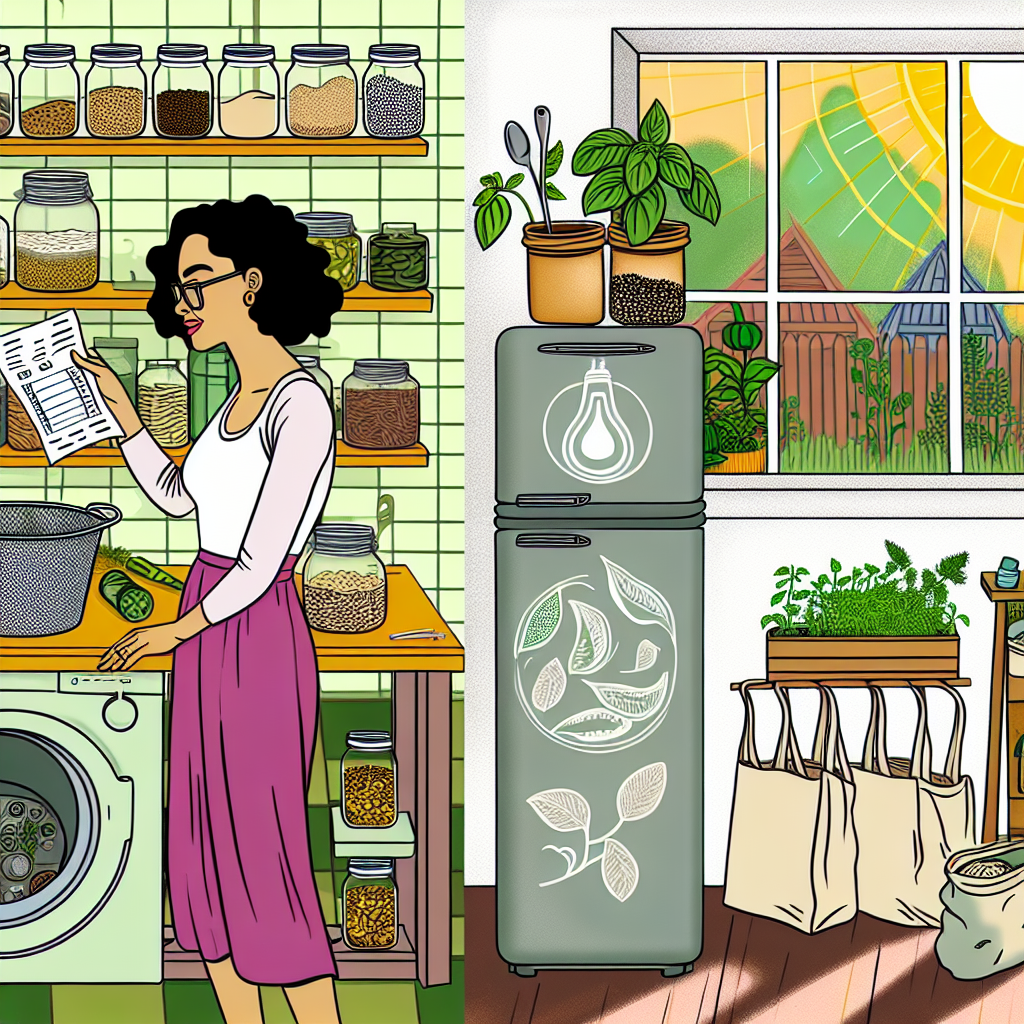Top 10 Eco-Friendly Swaps to Cut Your Monthly Expenses
Welcome to the Frugal Zeitgeist blog, where we mix saving money with green living. Here, being kind to the Earth isn’t just for tree-lovers; it’s for those who love saving money too! Changing your lifestyle with eco-friendly habits isn’t only great for Mother Earth—it’s also awesome for your wallet. So, let’s take a ride through the top 10 eco-friendly swaps that can help you save money each month while being kind to the planet.
1. Energy Efficiency
a. LED Lighting
Switch to LED Bulbs: Why use those old energy-wasting light bulbs when you can switch to LEDs that are better for you and the planet? LED bulbs use up to 80% less energy and last up to 25 times longer. They might cost a bit more at first, but in the long run, each LED bulb could save you over $200 on your electricity bill. Now that’s a bright idea!
b. Energy-Efficient Appliances
The Upgrade of a Lifetime: Those old appliances might have a certain charm, but they also cost you more money. Switching to energy-efficient models means using less energy and saving money. Look for Energy Star ratings, and you could save around $75 a year. Plus, you might even get some money back through appliance rebates!
c. Smart Thermostats
Be Smart, Save Smart: Smart thermostats are like the superstars of your home’s heating and cooling system. They learn your habits to reduce energy waste. By using them, you can save around 10% on your heating and cooling bills. That’s a warm feeling!
2. Reduce Water Usage
a. Low-Flow Fixtures
Let’s Talk About Flow, Shall We?: Low-flow faucets and showerheads help you use less water without losing water pressure. They can cut your water usage almost in half, which means both the environment and your water bill will thank you.
b. Water-Saving Toilets
Doing Flushable Business: Dual-flush toilets let you pick how much water to use each time you flush. This can save lots of water and money. You could save over $100 a year per household!
c. Rainwater Harvesting
Raindrops Keep Falling on My Yard: Collect rainwater using a simple rain barrel that costs about $60. Over time, you’ll save on your water bill and help your garden stay green and healthy.
3. Transportation Alternatives
a. Biking or Walking
Put the Pedal to the Metal—or Hoof It: Instead of driving, try biking or walking. It’s good for your health and saves money on gas and car repairs. Plus, you cut down on CO2 emissions, just like planting trees!
b. Public Transit
Hop on the Bus (or Train) Gus: Riding the bus or train instead of driving could save you almost $10,000 a year when you add up all the costs of gas, insurance, and car maintenance. Plus, you can listen to your favorite podcasts instead of getting stuck in traffic.
c. Carpooling
The More the Merrier: Share rides with others to save money on commuting costs. Carpool apps make it easy to set up rides, and you’ll not only save money but might also have fun sharing music playlists.
4. Sustainable Food Practices
a. Plant-Based Diet
Going Green on the Plate and in the Wallet: Eating less meat isn’t just good for your health; it’s great for your budget too. You could save about $750 a year per person by eating more plant-based foods, while also cutting your carbon footprint by half.
b. Buying in Bulk
Bulk it Like Beckham: Buying food like grains, nuts, and spices in bulk saves money and reduces plastic waste. Bulk stores often have other items too, like cleaning supplies, so you save money and reduce waste.
c. Growing Your Own Produce
Garden of Eating: Even a small space can grow your own food. Start with herbs or veggies, and you’ll save money on groceries. There’s nothing like the taste of a home-grown tomato straight from your garden!
5. Reduce, Reuse, Recycle
a. Reusable Products
Recycle, But Make it Fashion: Swap single-use items for things you can use again, like water bottles and tote bags. They reduce waste and save money over time. Your savings might not be treasure, but they sure feel like it!
b. Second-Hand Shopping
Good as New (To You): Thrift stores and online resale sites are great for finding treasures. You save money and help the planet by giving products a second life. Plus, finding hidden gems can be exciting!
c. DIY Cleaning Products
Clean House, Clear Conscience: Make your own cleaning supplies with things like vinegar and baking soda. They work as well as store-bought products but cost a lot less. Try mixing equal parts white vinegar and water for an all-purpose cleaner, and watch your savings grow.
6. Eco-Friendly Personal Care
a. Refillable Beauty Products
Refill and Rejoice: Opt for brands that offer refills on beauty products to save money and reduce plastic waste. Your wallet and the planet will thank you!
b. Natural Personal Care Items
Naturally Frugal: Use natural personal care products like bar soaps and shampoos. You can even make your own face masks with ingredients like honey and yogurt—they’re good enough to eat!
Conclusion
Trying out these eco-friendly swaps can help make the planet healthier while saving you money. Start small or try them all—every little change contributes to a brighter future for the Earth and your bank account. Living sustainably isn’t just a trend; it’s a smart way to save money. Happy swapping!








